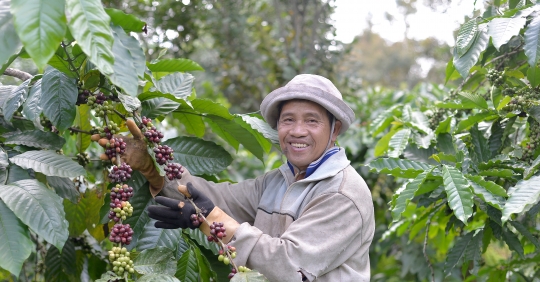[ad_1]
LAM DONG With an unprecedented method, Mr. Trinh Tan Vinh transforms his coffee garden into a fresh forest. Coffee products in particular have a much higher value than usual.
Gartenland awakens to new life
In recent years, the family of Mr. Trinh Tan Vinh, who lives in Tan Phu 2 Village (Dinh Lac Parish, Di Linh District, Lam Dong), has focused on the implementation of the organic coffee model, covering a total area of about 1 ha. To this day, 14 years later, his family’s organic honey coffee is well received by consumers at home and abroad.
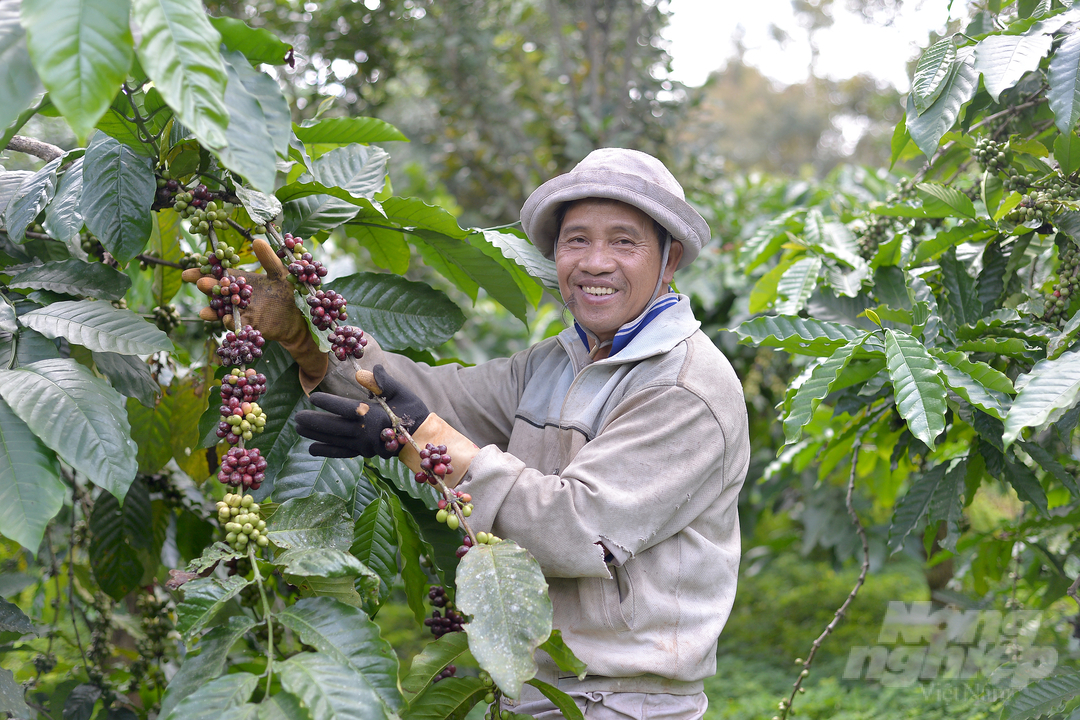
In the first year of using the organic form, Mr. Ving’s family’s coffee yield dropped from 5 tons of kernels/ha to less than 2 tons. So far, the trees in the garden have grown stably and the yield has improved. Photo: Min Hau.
Vinh’s family’s 1-acre coffee garden is located off Highway 20 and this is also the garden that has suffered a lot of gossip and words from people in the area due to the “different” approach. Before that, Mr. Vinh’s family still produced coffee in the traditional way and used many toxic pesticides. In 2007, he suddenly realized that the use of such pesticides had many unpredictable health and environmental consequences. After many nights of deliberation, he decided to find out and switched to organic coffee production in 2008.
In the first year of using the organic form, the garden yield dropped from 5 tons of grains/ha to less than 2 tons of grains, which disappointed him and his family. Worse, as many people in the area constantly criticized this “different” way of doing things.
Despite the serious lack of income in the first harvest, Mr. Vinh’s family did not give up, instead he embarked on a more methodical and scientific process to revive the vitality of the garden. “I researched more documents, asked experts and agricultural officers more about organic farming. As a result, the procedure has gradually improved,” says farmer Trinh Tan Vinh.
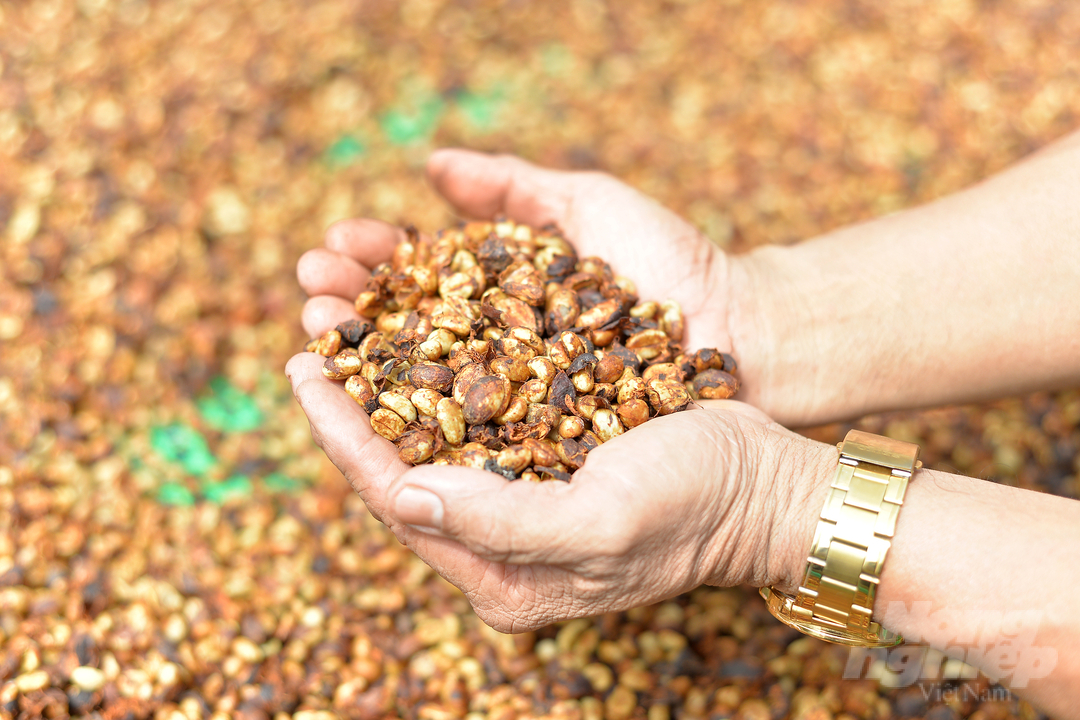
At present, Mr. Vinh’s family produces and supplies over 1 ton of finished organic honey coffee and over 2 tons of regular organic powdered coffee, and supplies them to domestic and overseas markets. Photo: Min Hau.
According to gardeners, the most important thing when making the switch from traditional to organic is to ensure crop growth while preventing pests and diseases. In order for the tree to have enough nutrients and grow well, his family combined the use of liquid manure with microbiological fertilizer. In the case of pests and diseases, the family must first apply biological products to eradicate them. Later, when the garden environment is balanced, the trees will gradually turn green and thrive.
According to Mr. Vinh, one of the solutions to add variety to the garden is the vegetation layer of bean leaves. Accordingly, when the family planted this layer of grass on the garden surface, the weeds were strictly limited. More precisely, the garden always retains moisture, has a thriving microflora and creates an ideal living environment for natural enemies.
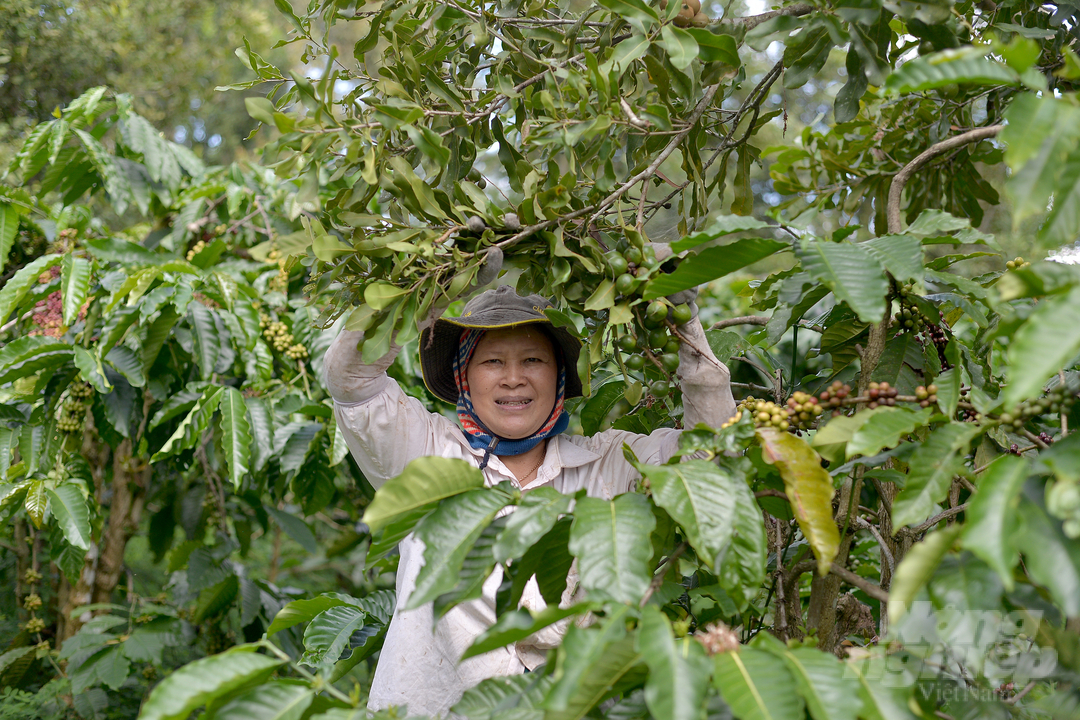
Mr. Vinh’s coffee garden became a fresh forest. Photo: Min Hau.
“Before 2008, the family had to spend a lot of money on herbicide costs and herbicide spraying every year. Now the family can save that amount thanks to the green vegetation. Drying also saves watering 2-3 times. the soil has come back to life, the trees are robust and growing well,” shared Mr. Trinh Tan Vinh.
Honey coffee from the forest garden
Mr. Vinh crouched to walk among the green coffee trees and couldn’t hide his delight, he confided: “The garden floor is green with bean leaves, the second layer is the green color of the coffee trees, the third layer, the third layer , The second layer is the green color of the coffee trees. 4 are the canopies of macadamia, durian. All have created a green forest garden, fresh and cool air.”
In this forest garden, the coffee yield is currently 4 tons/ha. In order to increase the value of the product, Mr. Trinh Tan Vinh’s family organizes the harvest according to the method of selecting 100% ripe fruit. The harvested coffee is washed, selected again and processed into premium organic honey coffee (honey coffee).
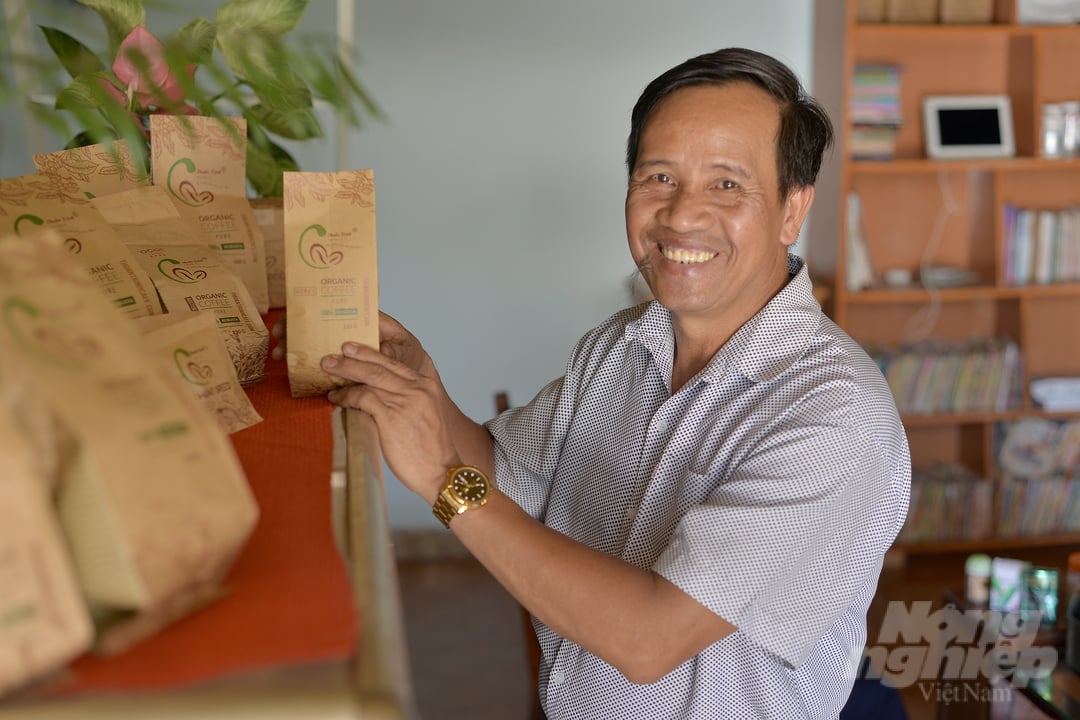
Organic honey coffee products branded Thuan Trinh have been well received by the market. Photo: Min Hau.
According to the garden owner, in 2016, a Vietnamese-German agricultural doctor visited his family’s coffee garden and discovered round, fragrant, sweet and high-quality coffee beans, so he instructed the family to make coffee products processed into honey. This doctor then delegated the entire process to his family to manufacture and market the product.
Currently, Trinh Tan Vinh’s family has completed the process from production to packaging with Thuan Trinh coffee brand. Every year, his family produces and supplies over 1 ton of finished organic honey coffee and over 2 tons of regular organic powdered coffee, and supplies them to domestic and overseas markets. Thuan Trinh coffee products also achieve 3-star OCOP product certification in 2020 and 4-star in 2021. In 2021, Thuan Trinh coffee products won the Lam Dong Clean Agricultural Product Award.
Mr. Trinh Tan Vinh said that the organic coffee model helps the family save 25-30% on labor and herbicide costs compared to traditional methods; 40% reduction in fertilizer costs, irrigation running costs. “Each phase will be reduced a little and if you add it up it will be a large amount that will contribute to increasing profits,” said Mr. Trinh Tan Vinh.
[ad_2]
Source link

